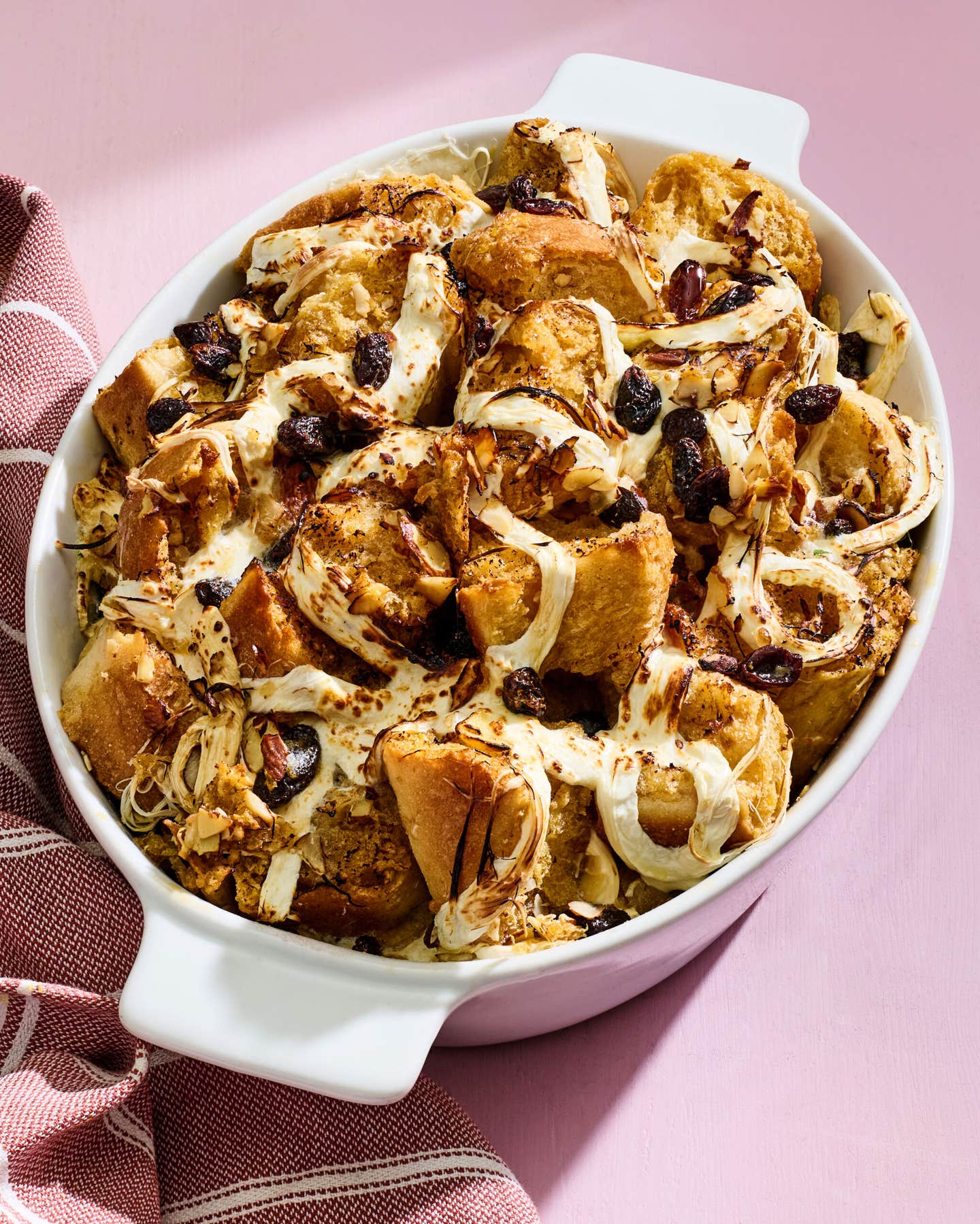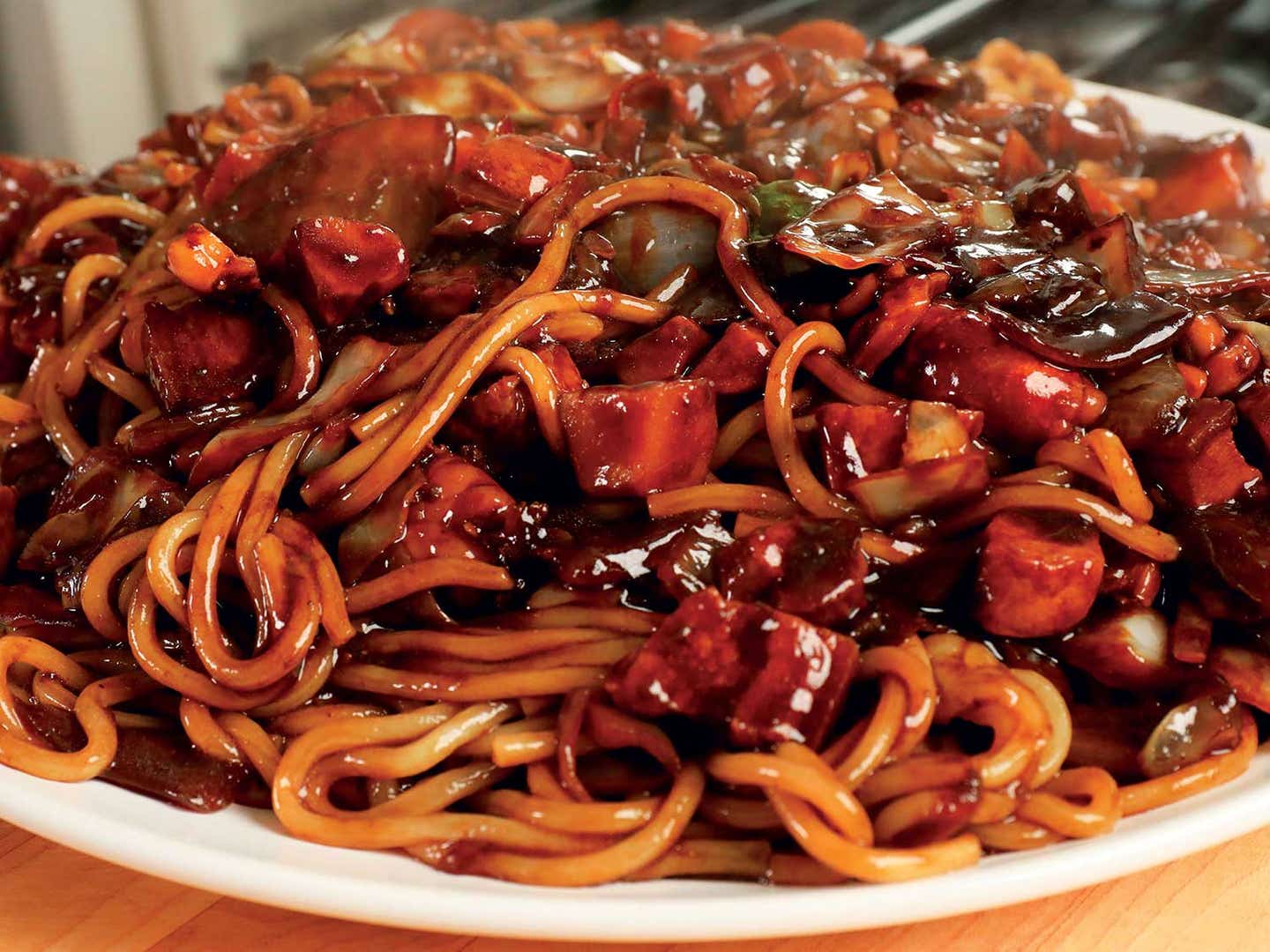
These Black Bean Noodles Are Korea’s Most Popular Takeout Dish
YouTube star and cookbook author Maangchi breaks down how to make superior jajangmyeon at home
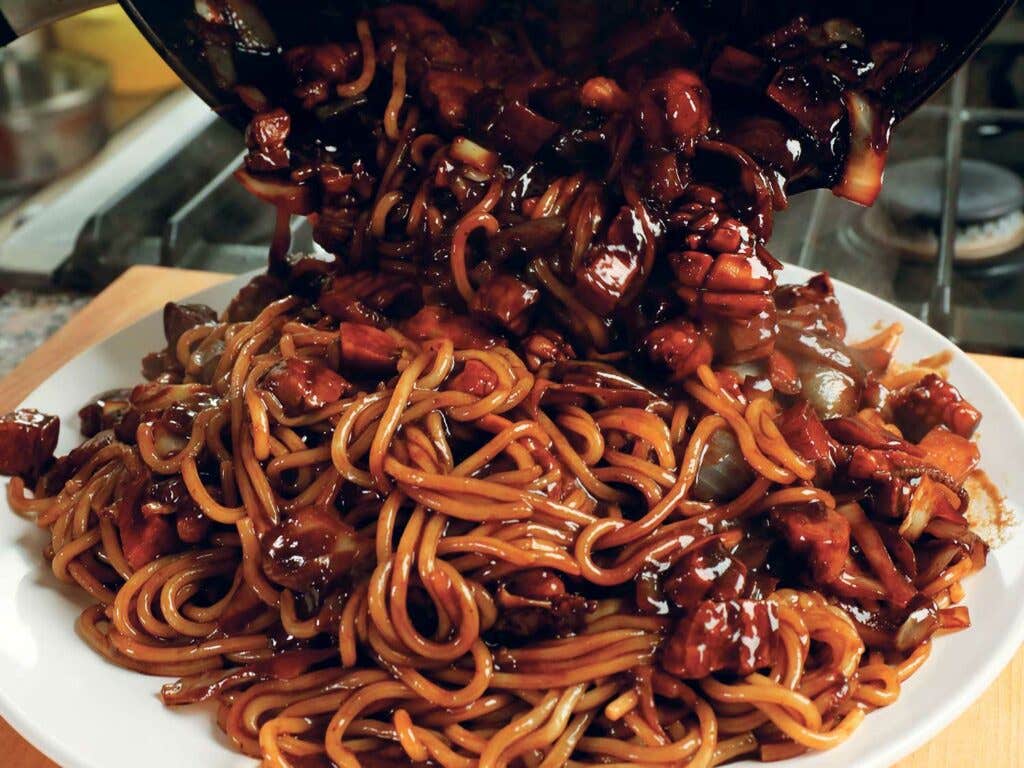
Whenever Maangchi moved homes throughout her life in South Korea, she had a tradition before unpacking any boxes: ordering big bowls of jajangmyeon. The YouTube star and author of Maangchi’s Big Book of Korean Cooking calls jajangmyeon her version of pizza—but for the convenience of delivery, not for the flavor. Dark as night from the fermented black bean sauce, the chewy noodles with pork, zucchini, and potato are instantly recognizable, not to mention beloved throughout Korea. They’re a “cheap, easy-access food that you can call and have delivered anytime, for about $5,” explains Maangchi. When you order it in Korea, it arrives piping hot in 30 minutes or less, and the delivery people will even come back to pick up the used bowls afterward.
Though jajangmyeon is a humble dish, Maangchi explains that “it is never looked down on for the price because it has a lot of memories.” In fact, it was its popularity in Korean dramas that made her share a recipe in the first place—readers started requesting one after seeing the noodles on TV. Since jajangmyeon was more of a dining-out dish, Maangchi did not grow up with a homemade version, but she did make it for her children once in a while—with a few tweaks to make it healthier, such as using vegetable oil instead of lard and adding more vegetables.
Her first version of jajangmyeon was a YouTube video in 2007, then she updated it with a new video and online recipe in 2012. The final version is in her new cookbook, as jaengban-jajangmyeon, an oversized-tray version of the dish with elevated ingredients like squid and shrimp. For her, tray jajangmyeon was reserved for special occasions out at restaurants. One of her favorite memories is when her father took her out to celebrate passing a big test in junior high school. “He was proud of me and invited all his friends, our family, tons of people, and we all had a big helping of jajangmyeon from the tray. It was piled up like a mountain, so high,” she recalls. That was more of a rare dining experience, though, says Maangchi. The first time she ate the dish, she was “covered in black bean sauce” at five years old, and her mother had to help her clean up. But it was worth the mess then—and it still is.
To make jajangmyeon at home, there are a few essential tips to follow in order to get the flavor and texture just right. The most important thing to know going into this recipe is that the dish is served with noodles on the bottom, and the sauce, meat, and vegetables are all poured on top for you to mix yourself. And no matter what ingredients you put it in, it’s the sauce that is the most important—so let’s let Maangchi start there.
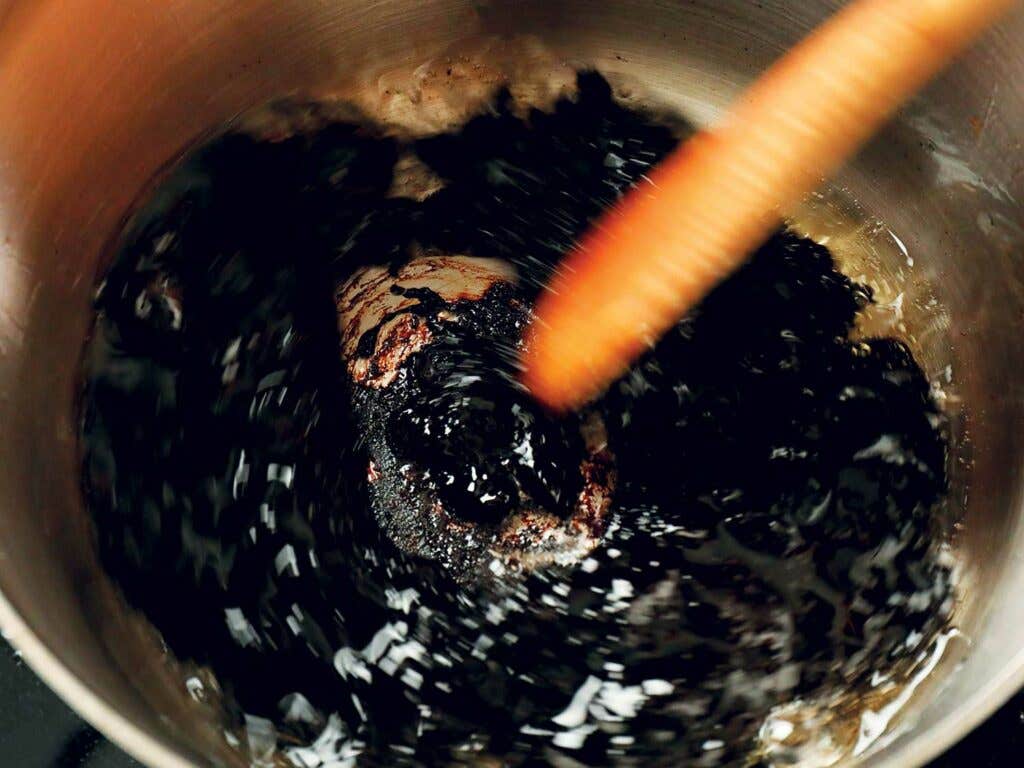
The Sauce
The base of jajang sauce is chunjang—the Korean version of zhajiang, Chinese black-bean paste—which is made of fermented soybeans, flour, and caramel color. Although it is salty, it is not as salty or funky as other Korean soybean pastes like doenjang. Chunjang is sour and earthy when raw, but transforms when stir-fried in a little oil. “It turns very savory, a little sweet, and nutty,” Maangchi explains. Once the paste is combined with more oil and onions over high heat, it takes on a smoky flavor and smell, which is an essential element to jajangmyeon. There is also a potato-starch slurry added to the sauce to help make it sticky, creamy, and glossy as it coats the noodles. “When you’re eating jajangmyeon, sticky sauce makes it not cool down so quickly. Everything should be well coated, stuck together, and saucy so it stays hot and you can enjoy it until the last bite,” says Maangchi.
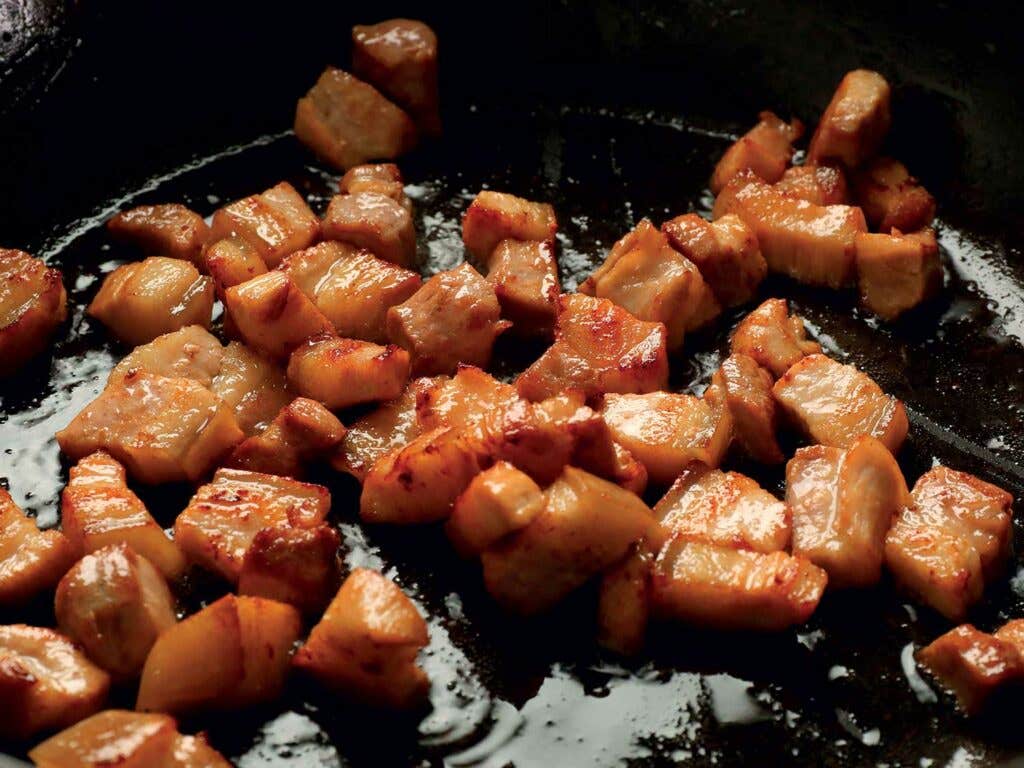
The Meat
Pork belly is Maangchi’s go-to for jajangmyeon, because she can stir-fry it, remove the excess pork fat, and be left with pork that stays crispy even after it is drenched in sauce. The extra-crunchy pork at the beginning is a trick she learned from a jajangmyeon cook in Korea, and though it works best with belly, shoulder or tenderloin can also work. (You can swap in beef or chicken, too, but the texture will not be the same.) In the tray version, shrimp and squid are added to elevate the dish, but they are optional.
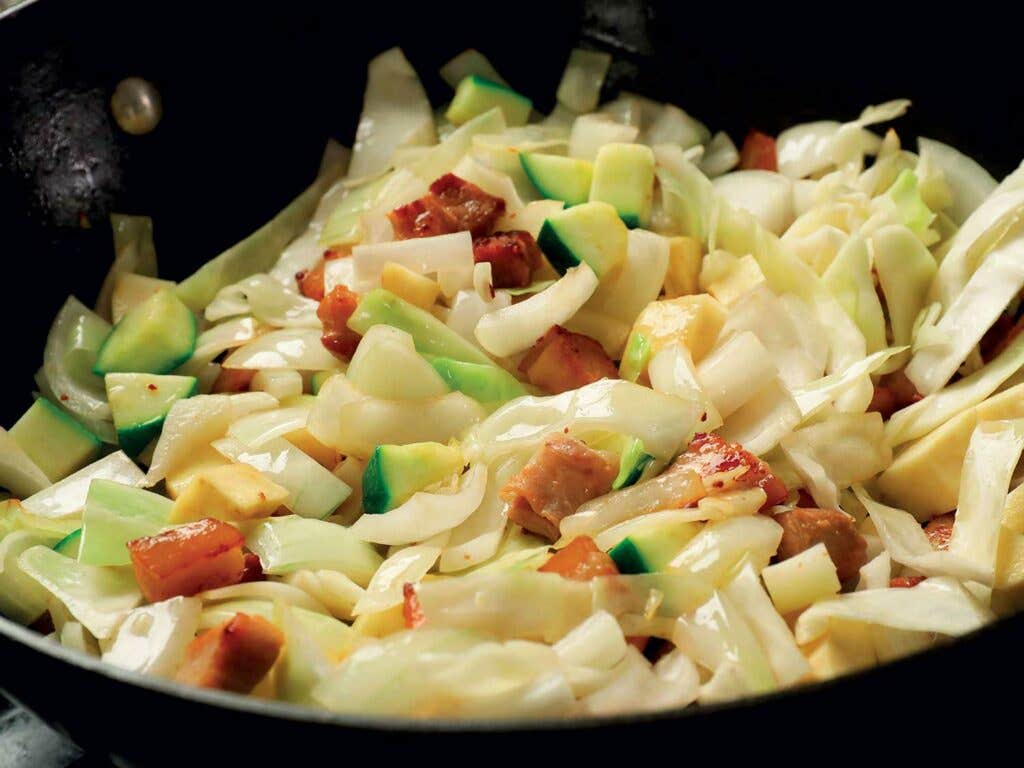
The Vegetables
Maangchi’s jajangmyeon recipe calls for onions, cabbage, zucchini, and potato, which may seem like a lot for one noodle dish. But they all lend a different texture: The onions serve as a flavor base, the potato’s starch helps make the sauce thick and creamy, the cabbage adds a bit of crunch, and the zucchini is tender and the least cooked of all the vegetables. “If you have to choose just one vegetable, it should be onion—lots of onions,” Maangchi insists. “If you have only black-bean paste and onions, you could make a very basic jajangmyeon.”
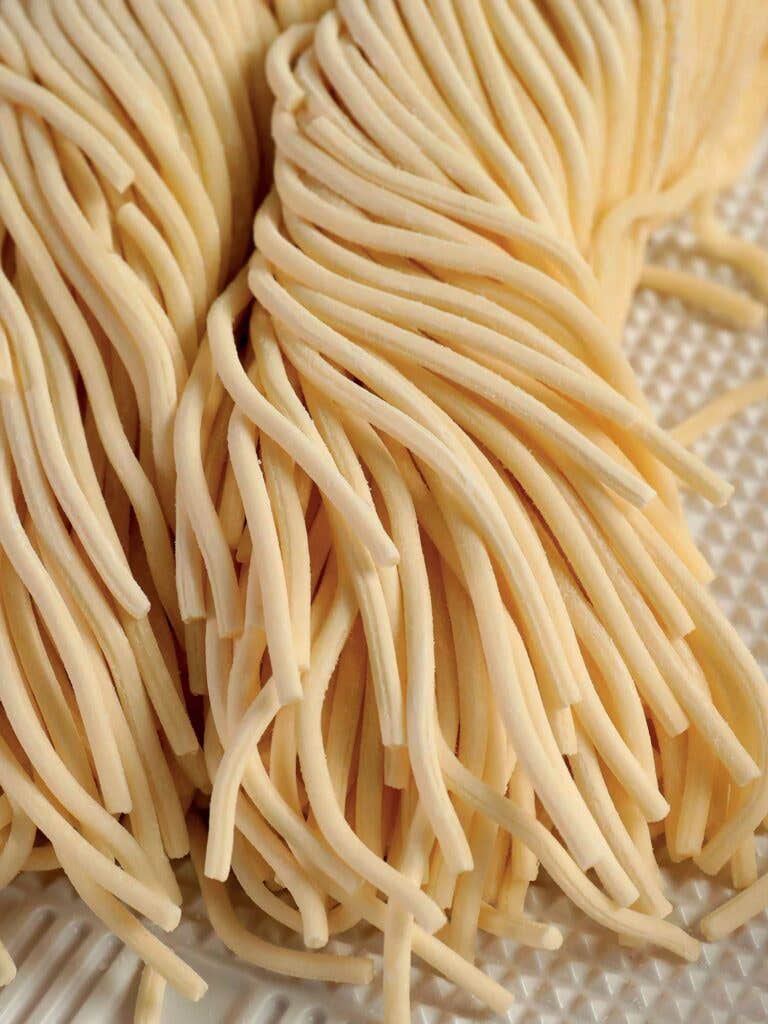
The Noodles
The thick, chewy wheat noodles used in jajangmyeon are almost always found in the refrigerated section of Korean markets. Maangchi says they should be “nicely coiled” in the package, and are typically labeled as “jajangmyeon noodles” or “Korean udon.” But if you don’t have access to a Korean grocery store, she has directed readers to make the dish with spaghetti, just so they’re able to still try that habit-forming sauce. The noodles should be drained thoroughly and rinsed of all starch before the sauce is poured over the top, then tossed at the table so they stay hot.
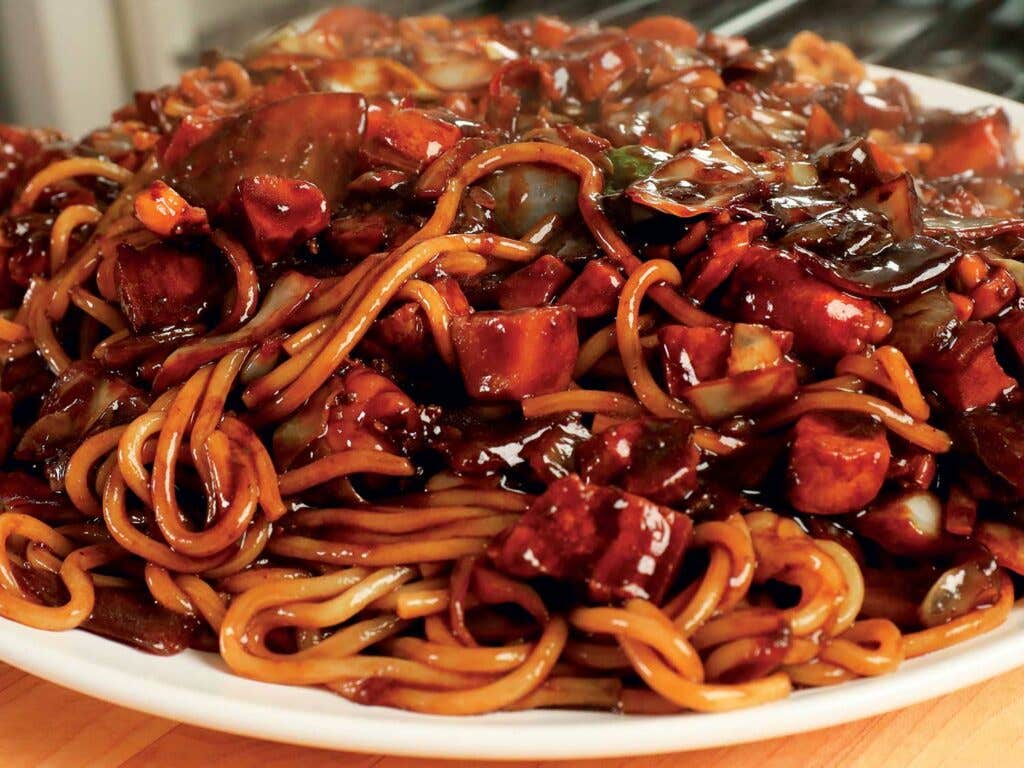
The Leftovers
Tray jajangmyeon makes a lot of food, so there is a high possibility of leftovers. Maangchi recommends storing the noodles and sauce separately for best reheating results. Jajangbap is another way to eat the sauce, served over warm rice (bap means rice in Korean). Maangchi says the sauce will last for up to a week in the fridge, but it rarely ever did in her household because she and her kids loved it so much. “In the Korean-Chinese restaurants, they usually have really high heat and boiling, smoky oil to cook it quickly. That’s one thing I cannot do as a home cook. But my family said, "Mom’s jajangmyeon is the best,” and that is all that matters to me.”
Keep Reading
Continue to Next Story









